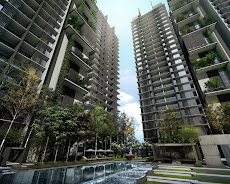 DS Rev. Ting shared a wonderful message themed "Your Paths Drip With Abundance".
DS Rev. Ting shared a wonderful message themed "Your Paths Drip With Abundance". The group singing was pretty impressive.
The group singing was pretty impressive. An energetic dance item. Gee, they don't look their ages!
An energetic dance item. Gee, they don't look their ages! This item was really a plus for the evening.
This item was really a plus for the evening. The cross talk was engrossing.
The cross talk was engrossing. The cake-cutting time!
The cake-cutting time! It was a thanksgiving celebration on the gracious occasion of the 20th anniversary of MAF of Huai Ang Methodist Church on 15th November, 2009. I had the honour to be invited to partake of their joy in this blessed service.
It was a thanksgiving celebration on the gracious occasion of the 20th anniversary of MAF of Huai Ang Methodist Church on 15th November, 2009. I had the honour to be invited to partake of their joy in this blessed service.DS Rev. Ting Tiew Kiong, in his message themed "Your Paths Drip With Abundance", quoted Psalm 65:11, saying, "The kind of life makes the kind of person; the kind of person makes the kind of fellowship; the kind of fellowship makes the kind of church. To sum up, it is glorious life that builds up good church!"
The fellowshippers of MAF of Huai Ang Methodist Church presented several items including dance, cross talk (or comic dialogue), etc to glorify God.
It was a joyous evening and I praised God for it!
Photos: Steven Hii










%5B1%5D.jpg)










































